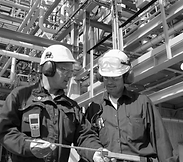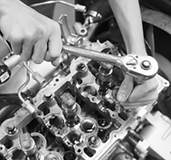Engineering and Technology Quarterly Reviews
ISSN 2622-9374




Published: 23 May 2019
Oxidative Clearing of Polyester Cotton Blended Fabric by Hydrogen Peroxide: An Alternative to Reduction Clearing
Abul Fazal Mohammad Fahad Halim, Roy Ajoy, Mohammad Muzammel Hossen, Arpan Chakma
World University of Bangladesh (Bangladesh), Zhejiang Sci-Tech University (China)

Download Full-Text Pdf
10.5281/zenodo.3155086
Pages: 68-81
Keywords: Reduction Clearing, Oxidative Clearing, PC, Disperse Dye, Reactive Dye
Abstract
Reduction clearing is commonly carried out as an after-treatment to remove deposits of disperse dye and other residual impurities from the surface of dyed polyester. Because of certain environmental and economical disadvantages associated with traditional reduction clearing, there is industrial interest in alternative processes. In this study the P/C blended fabric was dyed with disperse dyes in grey state and then treated with H2O2 at different concentration for oxidation clearing. Another process was carried out conventionally where pre-treated P/C blended fabric was dyed with disperse dyes and reduction cleared. Fabrics from both processes were dyed with reactive dyes. The performance was evaluated through assessing the changes in absorbency, Kubelka-monk theory (K/S value), wash fastness, rubbing fastness, bursting strength test and by comparing the obtained results. The overall results showed that, the test results of oxidation clearing process were quite similar to reduction clearing process. But after reactive dyeing oxidation cleared samples showed better results than reduction cleared samples.
References
-
DM, N. 1979. The dyeing of synthetic-polymer and acetate fibres. Dyers Company Publications Trust.
-
Broadbent, A.D. 2001. Basic principles of textile coloration. Bradford: Society of Dyers and Colourists.
-
Hawkyard, C. 2004. Synthetic fibre dyeing. Society of Dyers and Colourists.
-
Park, J. and J. Shore. 2004. Practical dyeing. Society of Dyers & Colourists.
-
Aspland, J. 1992. Disperse dyes and their application to polyester. Textile Chemist and Colorist. 24: p. 18-18.
-
Ul Aleem, A. 2013. An Investigation of Alternatives to Reductive Clearing in the Dyeing of Polyester. Heriot Watt University.
-
Gomes, J.R., C. Lima, and J. Almeida. 2000. Oxidative clearing of polyester and post-bleaching of cotton: a novel shorter process with better fastness. Colourage: annual edition, 47: p. 49-52.
-
Anis, P. and H.A. Eren. 2004. Examining The Effectiveness of Oxidative Clearing in One-Step Dyeing of Polyester/Cotton Fabrics. University of Uludag.
-
McIntyre, J.E. 2005. Synthetic fibres: Nylon, polyester, acrylic, polyolefin. Taylor & Francis US.
-
Deopura, B., et al. 2008. Polyesters and polyamides. Elsevier.
-
Perepelkin, K. 2001. Polyester Fibres Abroad in the Third Millennium. Fibre Chemistry. 33(5): p. 333-339.
-
Krichevskii, G. 2001. Textile Materials Made from Polyester Fibres:a Most Difficult Material to Color. Fibre chemistry. 33(5): p. 364-367.
-
Needles, H.L. 1986. Textile fibres, dyes, finishes, and processes: a concise guide. Park Ridge, N.J.: Noyes Publications.
-
Moncrieff, R.W. 1975. Man-made fibres. 6th ed. London: Newnes-Butterworths.
-
Bendak, A. and S. El-Marsafi. 1991. Effects of chemical modifications on polyester fibres. Journal of Islamic Academy of Sciences, 4(4): p. 275-284.
-
Shore, J. 1995. Cellulosic dyeing. Bradford: Society of Dyers and Colourists.
-
Choudhury, A.R. 2006. Textile preparation and dyeing. Science publishers.
-
Canal, J., et al. 2004. Effect of various bio-scouring systems on the accessibility of dyes into cotton. Coloration technology. 120(6): p. 311-315.
-
Hearle, J. 2007. Physical structure and properties of cotton, Cotton: science and technology. Woodhead Publishing Limited Cambridge; p. 35-67.
-
Gordon, S. and Y.-l. Hsieh. 2006. Cotton: Science and technology. Woodhead Publishing.
-
Cook, J.G. 1984. Handbook of textile fibres: Volume I. Natural Fibres. Cambridge: Woodhead Publishing Ltd.
-
Chao, N.P.C. 1963. Blending cotton and polyester fibres: effects of processing methods on fibre distribution and yarn properties. Georgia Institute of Technology.
-
Baykal, P.D., O. Babaarslan, and R. Erol. 2006. Prediction of strength and elongation properties of cotton polyester-blended OE rotor yarns. Fibres and Textiles in Eastern Europe. 14(1): p. 18.
-
Cyniak, D., J. Czekalski, and T. Jackowski. 2006. Quality analysis of cotton/polyester yarn blends spun with the use of a rotor spinning frame. Fibres & Textiles in Eastern Europe. 3(57): p. 33-37.
-
Sevkan, A. and H. Kadoglu. 2012. An investigation on ring and open-end spinning of flax/cotton blends. Journal of Textile & Apparel/Tekstil ve Konfeksiyon. 22(3).
-
Hegde, R.R., et al. 2011. Cotton fibres.
-
Wardman, R.H.a., an Introduction to Textile Coloration: Principles and Practice. 1st ed.
-
Shore, J. 1998. S.o. Dyers, and c. Blends dyeing. Bradford: Society of Dyers and Colourists.
-
Chakraborty, J.N.a., Fundamentals and practices in colouration of textiles.
-
Karmakar, S., Chemical Technology in The Pre-Treatment Processes of Textiles. 1st. Amsterdam. Elsevier.
-
Disperse Dyes | Properties of Disperse Dye. 2012, April 25. Available from: http://textilefashionstudy.com/disperse-dyes-properties-of-disperse-dye/ Access Date: 20/01/2018.
-
Avinc, O. 2011. Clearing of dyed poly (lactic acid) fabrics under acidic and alkaline conditions. Textile Research Journal. 81(10): p. 1049-1074.
-
Shore, J. 2002. Colorants and auxiliaries organic chemistry and application properties: Volume 2: Auxiliaries.
-
Dr. Naresh M. Saraf, D.A.G.S. Save Natural Resources: Adopt Acid Reduction Clearing. Available from: https://www.google.com/url?sa=t&rct=j&q=&esrc=s&source=web&cd=1&ved=0ahUKEwjuiJ3n_vnZAhXLPY8KHZmpB9QQFggmMAA&url=http%3A%2F%2Fwww.sarex.com%2Ftextile%2Fwp-content%2Fuploads%2F2015%2F08%2FART138.pdf&usg=AOvVaw1Zh69J7dvXbiasbaDctVnT Access Date: 2/02/2018.
-
Roessler, A. and X. Jin. 2003. State of the art technologies and new electrochemical methods for the reduction of vat dyes. Dyes and pigments. 59(3): p. 223-235.
-
Baumgarte, U. 1987. Developments in vat dyes and in their application. Coloration Technology. 17(1): p. 29-38.
-
Tiedemann, W. and J. Schad. 1998. Reduction clearing of polyester dyeings from its ecological and economic aspects. Melliand Textilberichte International Textile Reports. 79: p. 852-855.
-
Clarke, E. and D. Steinle. 1995. Health and environmental safety aspects of organic colorants. Coloration Technology.; 25(1): p. 1-5.
-
Bhaskar, M., et al. 2003. Analyses of carcinogenic aromatic amines released from harmful azo colorants by Streptomyces sp. SS07. Journal of Chromatography A. 1018(1): p. 117-123.
-
Chung, K.T. 2000. Mutagenicity and carcinogenicity of aromatic amines metabolically produced from azo dyes. Journal of Environmental Science & Health Part C.18(1): p. 51-74.
-
Zee, F. 2002.Anaerobic azo dye reduction. Netherlands: Wegeningen University.
-
Pandey, A., P. Singh, and L. Iyengar. 2007. Bacterial decolorization and degradation of azo dyes. International Bio-deterioration & Biodegradation.; 59(2): p. 73-84.
-
Eren, H.A. 2006. Afterclearing by ozonation: a novel approach for disperse dyeing of polyester. Coloration technology. 122(6): p. 329-333.
-
Chinta, S. and S. VijayKumar. 2013. Technical facts & figures of reactive dyes used in textiles. International Journal of Engineering and Management Sciences. 4(3): p. 308-312.
-
Clark, M. 2011. Handbook of textile and industrial dyeing. Woodhead Publishing Series in Textiles. Oxford; Philadelphia: Woodhead Publishing Limited



